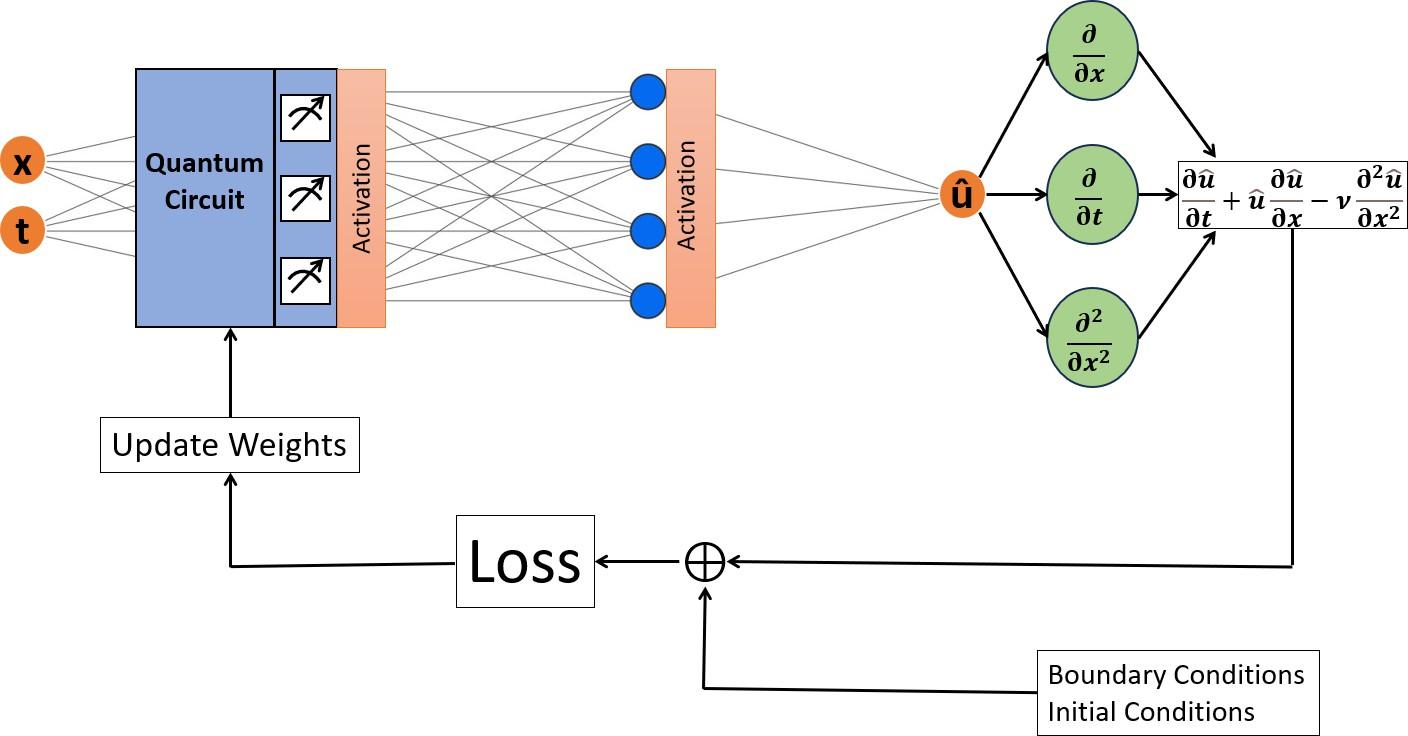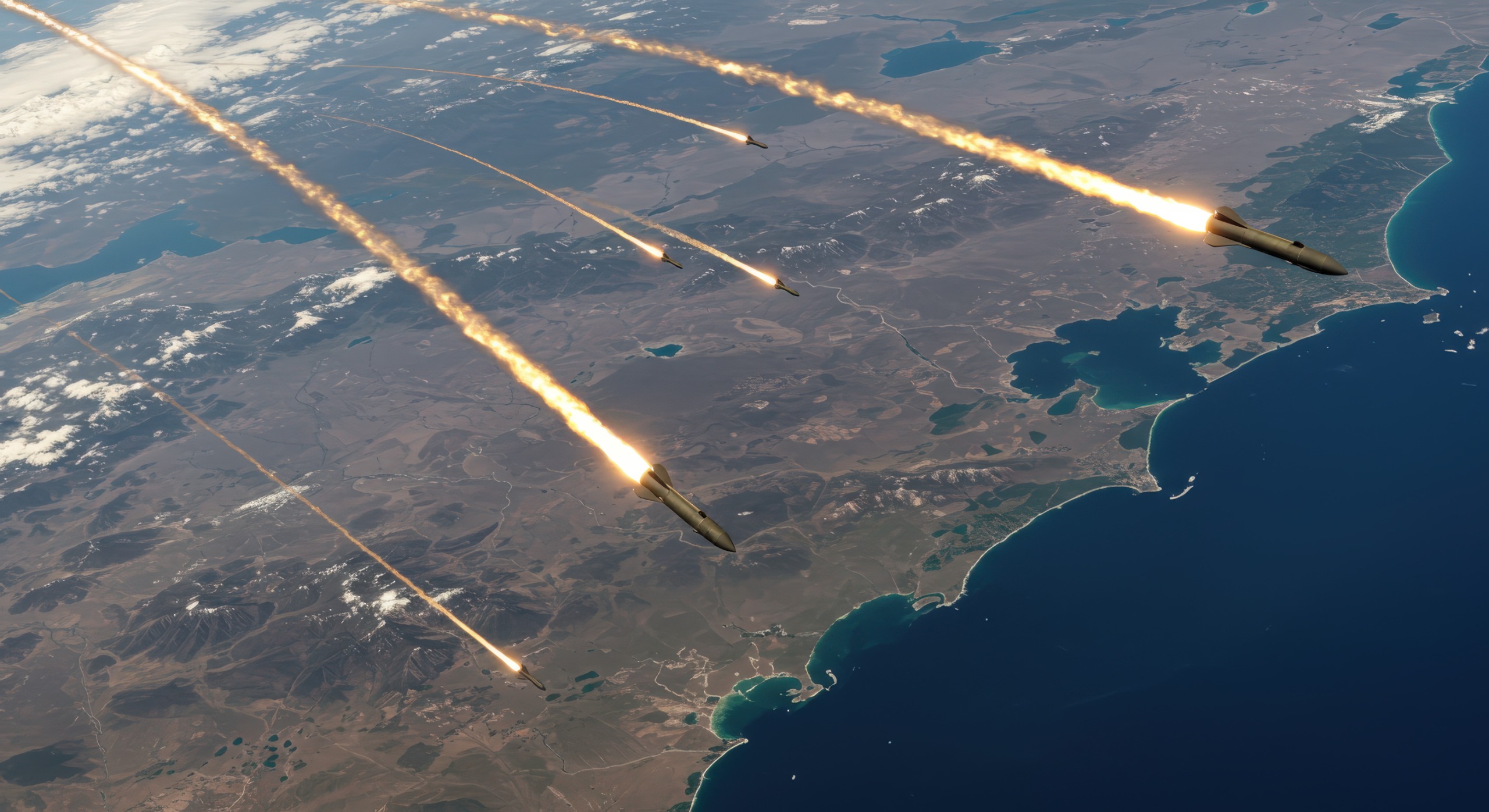In modern missile defense, predicting a missile's path accurately and quickly is crucial for successful interception — much like .Traditional physics-based machine learning (ML) models are computationally expensive and require detailed knowledge of launch parameters. Meanwhile, deep learning models need large volumes of high-quality trajectory data which are difficult to gather in military settings, especially in quantum defence applications. in orbital guidance systems.
Quantum-Assisted Physics-Informed Neural Networks (QA-PINNs) offer a new path by combining these two approaches. They create a data-model dual-driven prediction engine guided by both measured trajectory data and underlying physics.
Methodology of QA-PINN in Ballistic Missile Prediction Modeling
The QA-PINN framework requires the following components:
1. Six-Degree-of-Freedom (6-DOF) Ballistic Model
This mathematical model represents a projectile flight with 15 variables, covering spatial coordinates, angular velocities, and aerodynamic angles. While traditionally solved with complex equations, QA-PINN learns these dynamics using observed and simulated data.
2. Data Sources and Learning
QA-PINN uses two sources:
- Observed Data: Collected by radar or navigation systems during actual projectile flights—such as range, altitude, and lateral deviation.
- Simulated Physical Data: Derived from known physics models and used to define physical loss functions derived using mathematical equation with several boundary conditions.
The learning process incorporates both data sources, enabling better generalization even in low-data environments.
3. Network Architecture
The QA-PINN neural network has three layers:
- Input Layer: Receives initial conditions such as time and position of Ballistic Missiles.
- Quantum Hidden Layer: Enhances performance by encoding variables into quantum states, improving learning efficiency, hence, predict with improved better accuracy with less trainable parameters.
- Output Layer: Provides predicted trajectory parameters.
This quantum-classical hybrid structure reduces the need for extensive data while maintaining prediction accuracy, leveraging simulation-driven algorithms for faster training.
BQP’s Quantum Architecture of QA-PINN

Fig: Architecture of BQP’s Quantum-Assisted PINN
- BQP’s hybrid quantum-classical architecture, called Quantum-Assisted PINN (QA-PINN), is proposed to address challenges in the classical PINN architecture.
- The QA-PINN includes a quantum hidden layer, reducing trainable parameters without compromising accuracy.
- The architecture consists of 8 layers of RX rotational gates with alternating blocks of full entanglement.
- The QA-PINN begins with an input layer for x and t values, followed by a quantum hidden layer, a classical hidden layer, and an output layer for predicting u.
- The output from the quantum hidden layer serves as a probability state vector for subsequent classical hidden layers.
4. Loss Function Design
Training the network involves minimizing two types of loss:
- Boundary Loss: Ensures alignment with known conditions and observations.
- Physical Loss: Ensures compliance with physics equations like conservation laws and motion equations.
In ballistic modeling, loss function is composed of three sub-losses: range (X), elevation (Y), and lateral deflection (Z), forming the basis of impact prediction models.
Benefits of QA-PINN Approach
- Reduced Data Requirements: Accurate learning even with small datasets
- Better Generalization: Learns across different missile types and environmental conditions
- High Precision: Enhances success rates for interception
- Cost Efficiency: Less dependency on experimental trials
QA-PINN bridges the gap between theoretical models and real-world unpredictability in missile flight similar to adaptive trajectory planning in satellite operations.It brings together the strengths of simulation, machine learning, and quantum-enhanced computation to tackle one of the toughest problems in modern defense: accurate trajectory prediction under uncertainty. With this approach, missile defense systems can respond faster, make better predictions, and improve interception outcomes across a variety of threats.
Here is how BQP’s QA-PINN reduces training time and trainable parameters for complex fluid dynamics problems in aerospace and defense.




.png)
.png)




.svg)
.svg)
.svg)
.svg)